tl;dr Nintendo made a mess of the 3DS market in Taiwan with two different regional versions on sale at the same time and a limited number of localized games. Luckily it seems like they learned from their mistakes and have made the new Switch console region free

News that the 3DS would be region locked came as a big surprise to gamers. Up until that point Nintendo handhelds, such as the Nintendo DS and Game Boy, had all been region free. *The addition of a region lock on the 3DS would stop gamers importing games from other countries, restricting them to playing games from within their own region.
*Note: This Nintendo DSi was also region locked, but only for DSiWare and DSi enhanced cartridges.
Nintendo was quick to justify their actions in a 2011 statement:
"Nintendo has developed different versions of Nintendo 3DS hardware to take into account different languages, age rating requirements and parental control functionality, as well as to ensure compliance with local laws in each region."
The concept of region locking wasn't new. Home consoles are usually region locked in one way or another, though it just seemed wrong on a portable system. The region lock affected 3DS consoles bought in all regions, but one region got an especially bad deal – Taiwan.
To understand why 3DS gamers in Taiwan were hit so hard by the region lock you need to first understand a bit about Nintendo's history there.
Nintendo has had a presence in Taiwan since the early 80s. First through third parties who would handle the importing and distribution of consoles, and then later an official presence through their Taiwanese subsidiary, Nintendo Phuten. In both cases console were always NTSC-J (Japanese) region consoles. Even when consoles were marked as "For sale and use in Taiwan only" they were still NTSC-J. There was never an official Taiwan 'region'.
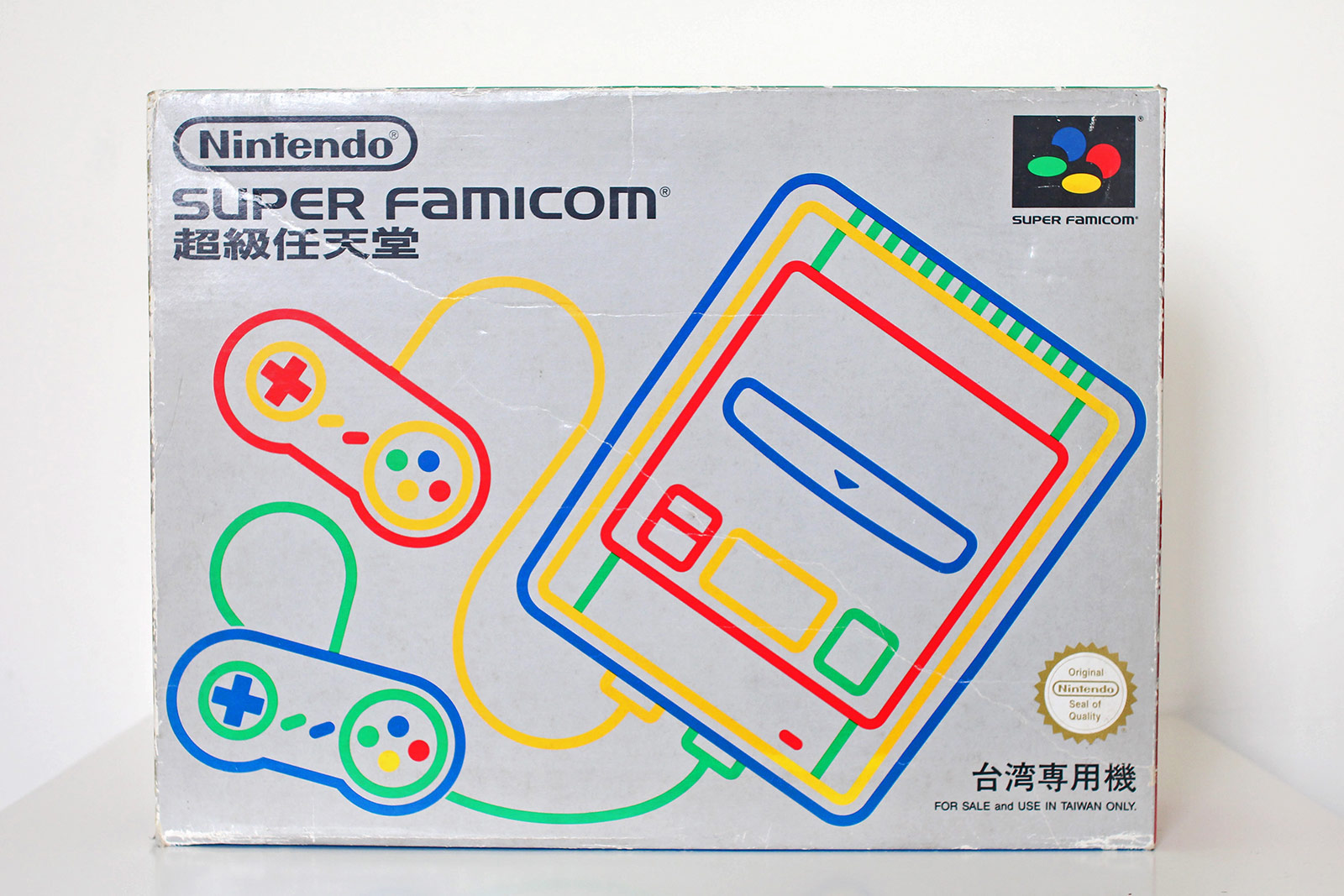
Taiwanese gamers could purchase a Nintendo console and import Japanese games to play. Some games were released with certain localizations such as box art and instructions, but these games were still of the NTSC-J region. It became an unwritten rule that all Nintendo consoles released in Taiwan would play Japanese games.
Take the Wii, for example, which saw an official Taiwanese release together with aggressive marketing campaign. While its release was accompanied by fully-localized games such as New Super Mario Bros. and Super Mario Galaxy 2, it was still a Japanese system – even the menu was in Japanese. This meant gamers could enjoy the benefits of a video game console that was covered by an official warranty in Taiwan (as opposed to a warranty-less grey import), play localized games, and still be able to import any games they wanted from Japan.
When Nintendo released the region-locked 3DS in Taiwan it wasn't an NTSC-J region console. Instead, Nintendo chose to create a new region that would serve Taiwan and Hong Kong – Known as the 'Traditional Chinese' region, with some cross over between this and the 'Chinese' iQue 3DS region in China.
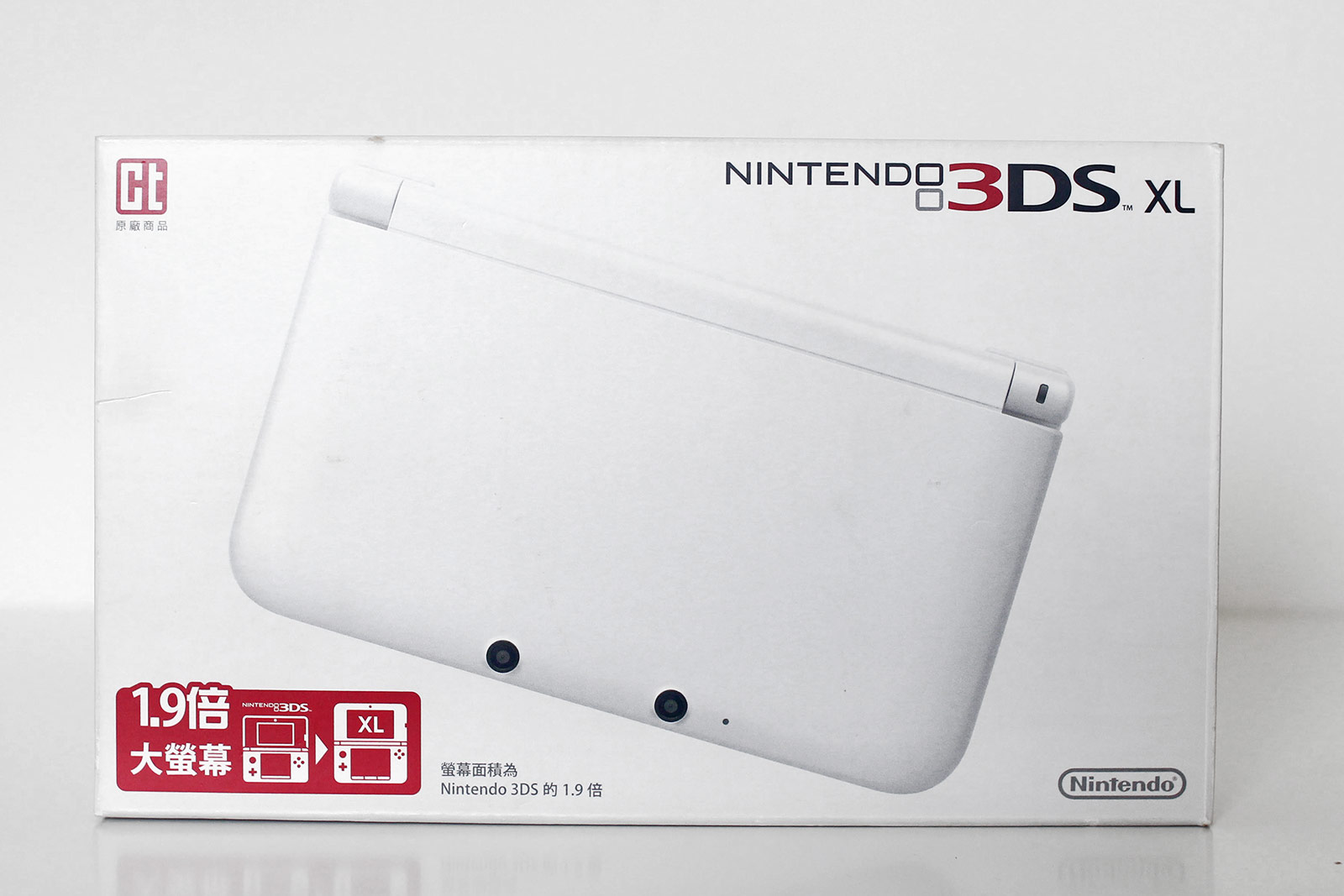
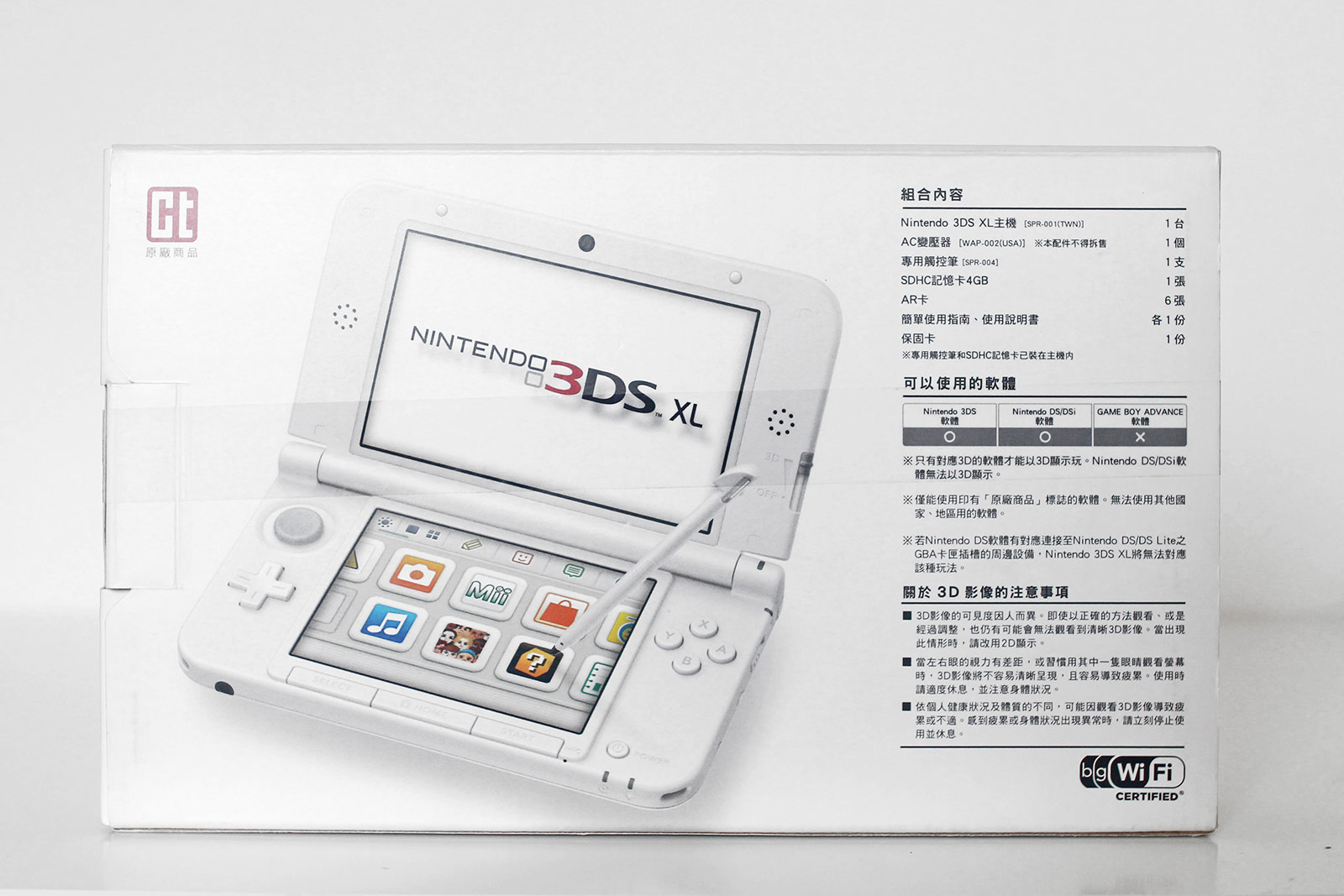
The Taiwanese 3DS market started out strong with fully localized versions of top titles like Ocarina of Time and Super Mario 3D land. At first it seemed that Taiwan finally getting its own gaming region would be a good thing.
Gradually, though, localised releases dried up. Instead of localizing more games Nintendo started to release games from other regions, and in other languages, into the Taiwanese market with usually little more than a sheet of brief instructions translated into Chinese. To make things worse not many games were released – leaving gamers with a tiny library to chose from, only a fraction of which had been localized, and without even the option of importing games from Japan due to the region lockout!
The bad handling of the Taiwanese/HK region meant that grey import 3DS consoles from Japan started to enter the market. Naturally consumers would choose to the Japanese console with a large library over the local console with only a handful of games.
Having two 3DS consoles from different regions on sale at the same time, often in the same shop, caused a lot of confusion. I even saw a notice in one Carrefour supermarket stating that 3DS games would not exchanged if you bought a Taiwanese game expecting to use it on your Japanese 3DS, or vice versa.
In total there were 23 (yes, twenty three) physical games for the Taiwanese region 3DS. Only 14 of which were localised into Chinese. Games were still available from the eShop, but only purchasable with the annoying Nintendo Points system and not credit cards like other regions.
After screwing with the Taiwanese market in 2014 Nintendo's Taiwan subsidiary shut up shop. The Chinese region was scaled back and to be headquartered in Hong Kong, and I saw video game stores sell off their Taiwan-region games for cheap and remove the 3DS from their shelves. It was obvious support for the region was waning and there wouldn't be any more console produced or games released.
What happened next is almost beyond belief. Instead of pushing a software update to all Taiwan region consoles to allowing them to play Japanese games, Nintendo released a second official 3DS – a Japanese console repackaged for the Taiwanese market. Exactly what Nintendo should have done from the start.
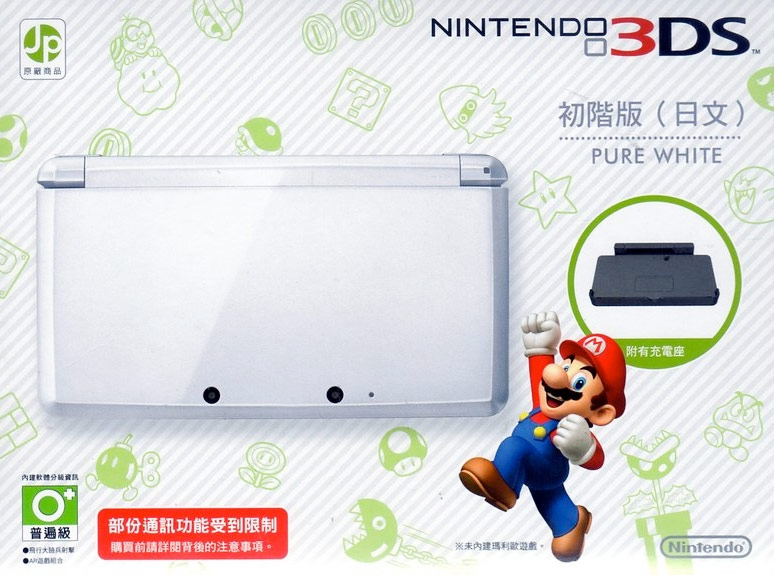
However, the region lock-out meant that this new console would only be compatible with Japanese games, and not the previously released localized games for the Taiwanese region. Furthermore, newly Taiwan-localized games started to be released, but they were only compatible with the new Japanese console and not the previously released localized console. Completely screwing over anyone who had bought the original Taiwanese 3DS.*
To fully illustrate how much of a mess Nintendo made of the 3DS market in Taiwan, there are officially released games available in Taiwan that promote the inclusion of a Traditional Chinese language option, while at the same time stating that the game cannot be used on Traditional Chinese consoles.
Here's an ad for a Pokemon Sun and Moon double pack. Note the 中文版 (Chinese Version) at the top.
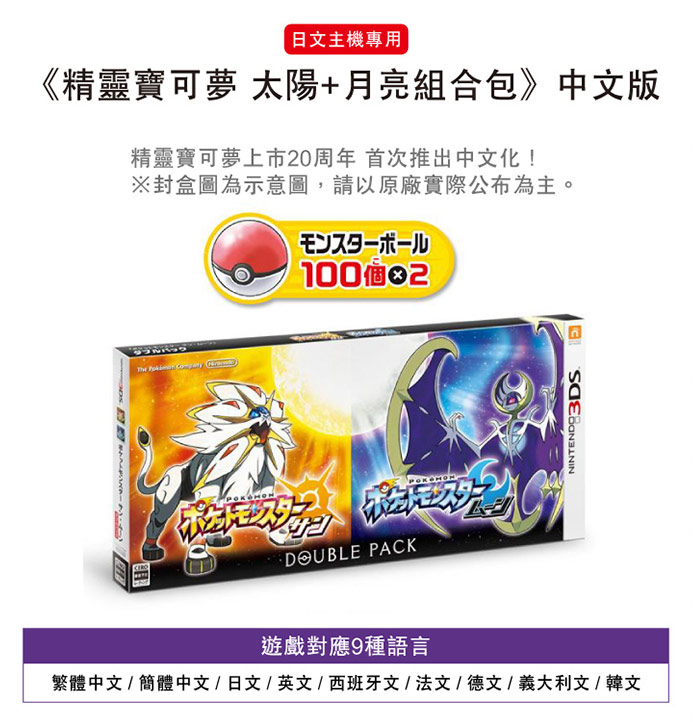
The ad features the following warning:

"Specially for use with Japanese consoles. Please note: This product is only compatible with Japanese language (Japanese specification) consoles, not suitable for use on Traditional Chinese (Taiwanese specification) consoles"
A localized game for the Taiwanese market cannot be used on the officially localized console.* Thanks, Nintendo.
*Note: This was not exactly true, as Pokemon Sun and Moon were also released in cartridges compatible with the Traditional Chinese consoles. In turn, those cartridges were not compatible with Japanese consoles.
Regardless, it was still a huge fiasco for Nintendo to release two different versions of the same game in the Taiwanese market, both with Traditional Chinese localization, but incompatible with each other.
The whole debacle hurt Nintendo in Taiwan who, after shutting down their Taiwanese subsidiary, chose not to officially release the Wii U in the country. Things went back to how they always were – gamers buying grey import consoles and Japanese games.
Thankfully it seems Nintendo learned their lesson and the newly released Switch is region free. According to Nintendo Hong Kong's website many upcoming games including Fire Emblem and Super Mario Odyssey will support both Simplified and Traditional Chinese language options. The Switch is also seeing an official release in Taiwan on December 1st, 2017.
